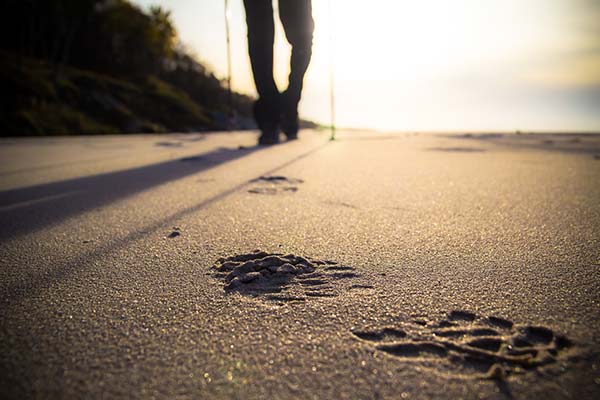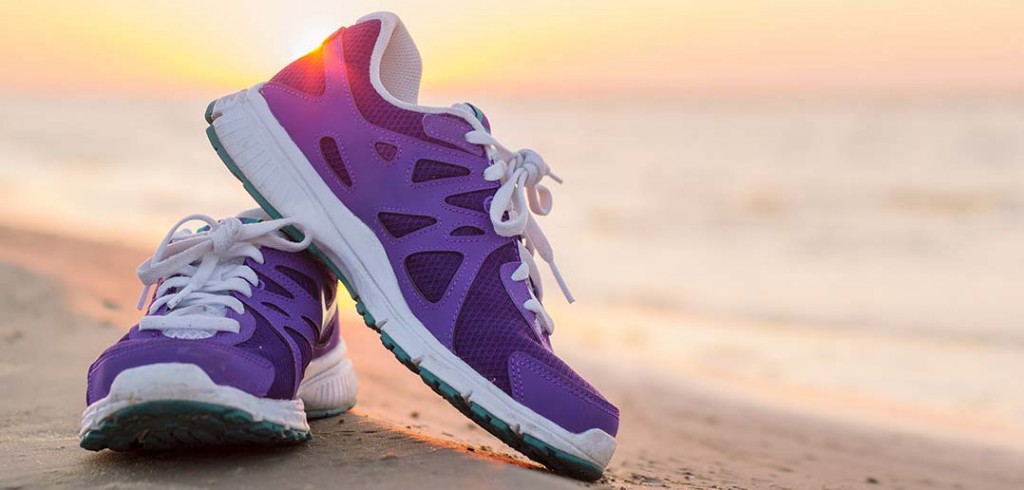Summer is here and that means lots of runners will take to the beach while on holiday. Longer daylight hours and more leisure time mean that going for long runs in the sand can be a big part of your daily workout routine. But what do you need to know before your feet hit the sand? Here are our handy beach running tips for this summer.
It doesn’t take science to figure out that running on sand is more ambitious than running on pavement. Simply ask anyone who’s ever been on sand.
But science can tell us just how much more challenging it actually is.
Running on the sand takes 1.6 times more energy than jogging on a hard surface, primarily because:
- The mechanical work required to get through the sand.
- The inefficiency of the work done by tendons and muscles as a result of sand’s unpredictable surface.
Researchers did their testing in soft, dry sand. As a result of the ocean soft sand, and its dynamic tides is usually not the single alternative for shore jogging.
Should you live close to the shore, or you’re heading out for a holiday this summer, you may be interested in taking your love of running to the coastline. Many runners in coastal regions do this to get a change-of-pace workout in one of the most relaxing spots in the world.
For joggers, not all beaches are created equal. The truth is, there are a few big factors which could make certain areas for running on, an entire dud.




Run on the Right Seashore
- Span. A jetty, a cliff, a river mouth…so many things can shorten the span of a shore– and turn your anticipated run into a big disappointment. Look for a shore that has at least a mile of shoreline that is uninterrupted.
- Slant. Some beaches are not suitable since they are cambered, or crowned. Based on cambered the beach is, this could induce you to run on a slanted surface for an extended period, which may result in harm. The better, the more level.
- Surface. For the bunch that was barefoot, some beaches are littered with stone and broken seashells that may be debilitating to run on. Choose your shoes with you just in case.
Choose the Right Type of Sand
Depending on the tide cycle, you might have several surfaces to pick from. And they’re day and night in terms of problem.
The soft sand is the surface that’s not completely wet. It’s a lot of give, which makes running on it hard (hence, why it takes 1.6 times more energy than paving.)
Sand that is packed, or the wet sand, is what is left behind as the tide recedes. It is much more solid than soft sand. Go to the wet sand, if you are new to beach running. If you like to do a soft-sand jog, prepare for a terrific workout.
Peek at the Tide Charts
To get the most wet sand to run on (or the most region to run on, in case your beach is narrow), ensure that you go at low tide, or at least when the tide is receding. Tide graphs are simple to discover on the Internet.
If you head out when the tide is rising or during high tide, you will not have any wet sand to run on –or at some spots, you may not have any beach at all.
Decide to Run With or Without Shoes
The wet sand is strong enough which you can run with shoes and not worry about sinking in. But of course, the sand is a soft enough surface to make barefoot jogging not impossible, maybe preferable.
Do so with care should you opt to really go without shoes. Your feet are used to the support, and in the end of even a short shore run, you might notice that the top of your feet or your ankles, achilles, calf muscles are fatigued or hurting.
Check Your Knees
Some beaches have more slanted surfaces than others, but even the most level beaches, at the bottom tides, have some slant to them. And generally speaking, the more complex the tide, the more angled the sand. Running on an angled surface can cause a mess on your knees and hips. Be sure to run out and back. The unevenness is not good for either leg, but it is better to place both legs through the paces than merely one (for instance, running down a beach in one direction, then back on the road). But in case you sense knee or hip pain, stick to the roads or degree trails.
Deep Sand Work Outs
Even when you can’t get down to the shore for the hard-packed sand at low tide in a while is a terrific kick in the butt. Sand, like soft snow, gives with each step, which means that your leg muscles (hello, burning calves) will feel the burn. This is extremely suitable, though, if you don’t have much time for a run. Doing a short work out in deep sand will scarcely leave you wishing you’d more time for a longer run.
Gear Up
Sunscreen is a must, as running next to the water will give you the beams that are reflective also as from right overhead. Sunglasses and a hat or visor are also useful in keeping you comfortable and focused on your run, instead of that fireball in the sky. And when you do a lot of beach running, look for shoes that have tight mesh over open net. When you are running on the soft stuff a shut mesh may keep your shoes from filling up with sand. And since it’s sometimes inevitable to get just a little sand in, wear socks that ward off blisters. Thin, faux options function nicely. And in case your sock and shoe combo isn’t abating the wipe, consider a lubricant like BodyGlide or Sportslick for long runs, especially long runs where your feet might get wet and sandy.
Take Advantage of Where You Are
Nothing caps off a fantastic shore run much better than a leap in the ocean (and thank goodness for quick-drying jog clothing). A soak in the sea will not give the same recovery advantages as an ice bath to you –unless you’re running on a beach in Maine in the winter–but it will undoubtedly leave you refreshed. And to take advantage of more surroundings, jump over alternative obstacles for agility training or heaps of seaweed, and race the sun as it sets into the water for speedwork.
Looking for some more tips and tricks on barefoot running in the sand? Take a peek at this YouTube video.
